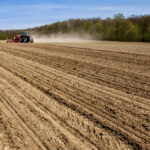
Multiple carbon markets bring opportunities
Farmers need to consider what the developing carbon market could do for their business

Genetic editing in livestock faces strong headwinds
University of California, Davis professor says lack of acceptance of gene editing stifles potential gains in livestock sector

Climate anxieties shape consumer demands
Agriculture and food sector faces “new reality,” according to food marketing firm Nourish

Supplementing — not replacing — large tractors with autonomy
There are opportunities for small robots on small grain farms

Ag-sector at high risk of cyber attacks, espionage
Digital security must keep pace with increasing vulnerability, advise experts

Ag-tech in 2021: Where to go from here?
There are advances and challenges for equipment developers

Reduced fertilizer emissions possible through incentives
Better application technology, more widespread 4R management and better understanding of nutrient availability are vital

Rain helps alleviate grain storage space crunch
Perceived storage crisis less severe than initially expected

Saving the mid-sized farm
Policy paper suggests altering institutions to offset cost burdens could support smaller farms without harming larger ones

Labour challenges impact machinery and parts supply
John Deere strike could add further delays to already backlogged equipment sector


